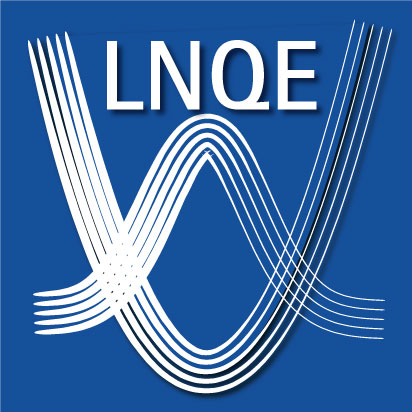Vier Fachvorträge zum Thema Nanotechnologie und Energie mit anschließendem gemütlichen Beisammensein
Mittwoch, den 27.04.2016 um 14:00 - 19:00 Uhr
im Walsroder Hörsaal (Raum 219), Gebäude 2501, Callinstraße 7, 30167 Hannover, Deutschland
1. Bernd Smarsly
Institute of Physical Chemistry, Justus-Liebig-University Giessen
“Peering into the disordered structure of non-graphitic carbons by x-ray diffraction: towards a comprehensive understanding of a million-ton-scale class of materials”
"Non-graphitic carbons (NGCs)" are an abundant and widely used class of carbon materials, encompassing activated carbon, soot, charcoal, and also carbons used in batteries and supercaps. Hence, it is highly desirable to depict fine details of the nanoscaled structure of NGCs in order to relate it to macroscopic properties and, thus, finally optimize carbon materials. However, only few methods are suitable to elucidate the structural makeup of NGCs, which consist of small and defect-rich stacks of graphene layers of hexagonally arranged sp2 carbon. X-ray diffraction (XRD) is one of the main methods to characterize the atomic and nanoscalestructure of NGCs, but NGC produce quite diffuse patterns. We have developed a novel approach for the analysis of the XRD data of such carbons, based on fitting the entire XRD data by suitable theoretical functions, providing useful and meaningful structural parameters such as La (average graphene layer extent), Lc (average stack height), a3 (average interlayer spacing) and several disorder parameters.
2. Christoph Lienau
Institute of Physics, Carl von Ossietzky University Oldenburg
“Quantum Coherent Charge Transfer in Organic Semiconductors: Towards Movies of Electronic Motion”
The efficient conversion of (sun-)light into electrical or chemical energy is one of the most fundamental and relevant challenges in current energy research. Generally, the underlying microscopic conversion processes happen on an exceedingly short femtosecond time scale. To elucidate these dynamics, we have recently combined coherent femtosecond spectroscopy and first-principles quantum dynamics simulations and have explored the primary photoinduced electronic charge transfer in different model systems. Surprisingly, our results provide strong evidence that in all systems, at room temperature, the driving mechanism of the primary step within the current generation cycle is a quantumcorrelated wavelike motion of electrons and nuclei on a timescale of few tens of femtoseconds. In my talk, I will present our most recent findings and their implications for the quantum-coherent photoinduced charge speration in organic semiconductors.
3. Astrid Bensmann und Richard Hanke-Rauschenbach
Institut für Elektrische Energiesysteme, Fachgebiet Elektrische Energiespeichersysteme, Leibniz Universität Hannover
„Welcher Speicher löst mein Problem? Ein Ansatz zur Technologieauswahl und Speicherdimensionierung“
Speicherauswahl und Speicherdimensionierung stellen bei netzgekoppelten Speicheranwendungen (z.B. Spitzenlastkappung) eine komplexe Aufgabe dar. Zu den Einflussgrößen gehören neben dem konkreten Lastgang und technologiespezifischer Parameter (z.B. Betriebscharakteristik, Lebensdauergrenzen, spezifischen Investitions- und Betriebskosten) auch die Betriebsführung des Speichersystems. Im vorliegenden Beitrag diskutieren wir einen strukturierten Ansatz, der sowohl Anwendern bei der Vorauswahl und Grobdimensionierung helfen kann, als auch für Speicherhersteller nutzbar ist.
4. Jens Twiefel
Institut für Dynamik und Schwingungen, Leibniz Universität Hannover
„Energy Harvesting aus Schwingungen - Konzepte und Modelle“
Schwingungen sind eine der wichtigsten Energiequellen für den Betrieb autarker Systeme im industriellen Umfeld. Hierfür werden verschiedenen Wandler eingesetzt u.a. piezoelektrische, piezomagnetische, elektrostatische und elektromagnetische Wandler. Für den Betrieb am individuellen Einsatzort muss in aller Regel der Wandler auf den individuell angepasst werden, um trotz der relativ kleinen Bandbreite eine zufriedenstellende Energiemenge zu liefern. Um hier Abhilfe zu schaffen, gibt es verschiedene Konzepte zur Bandbreitensteigerung, die in diesem Beitrag vorgestellt und diskutiert werden.






